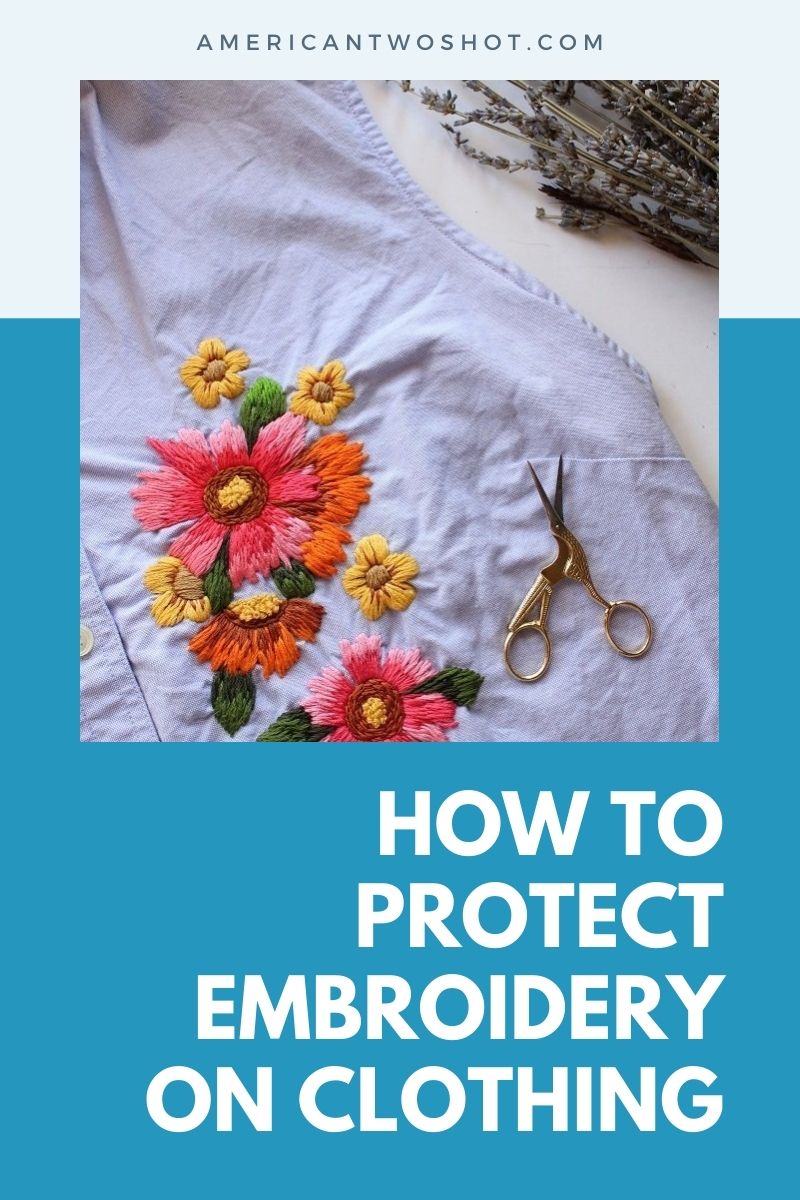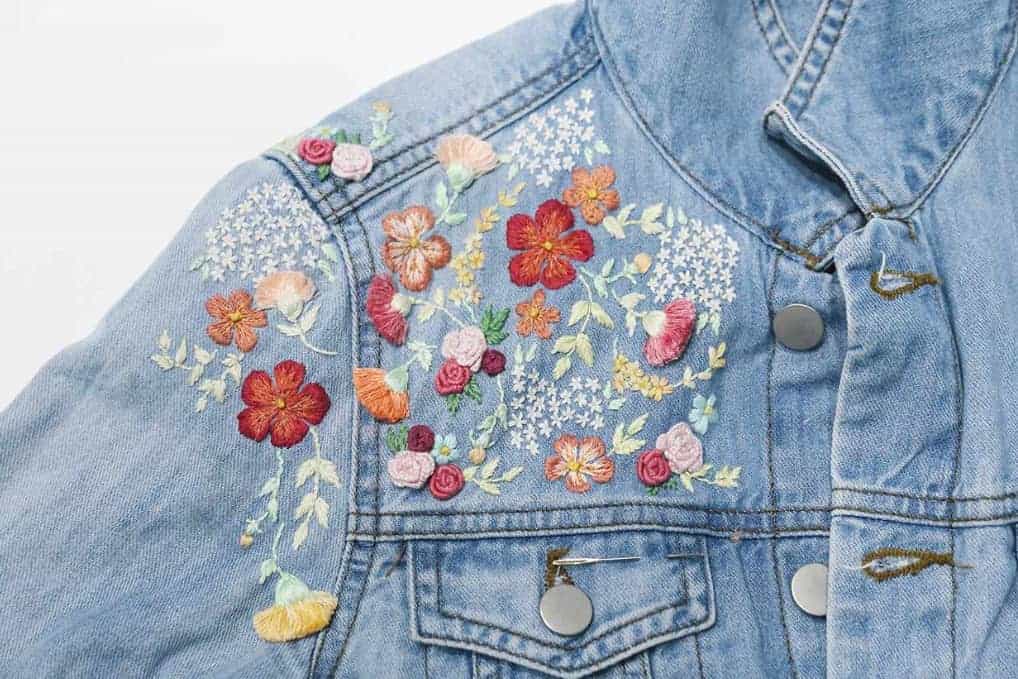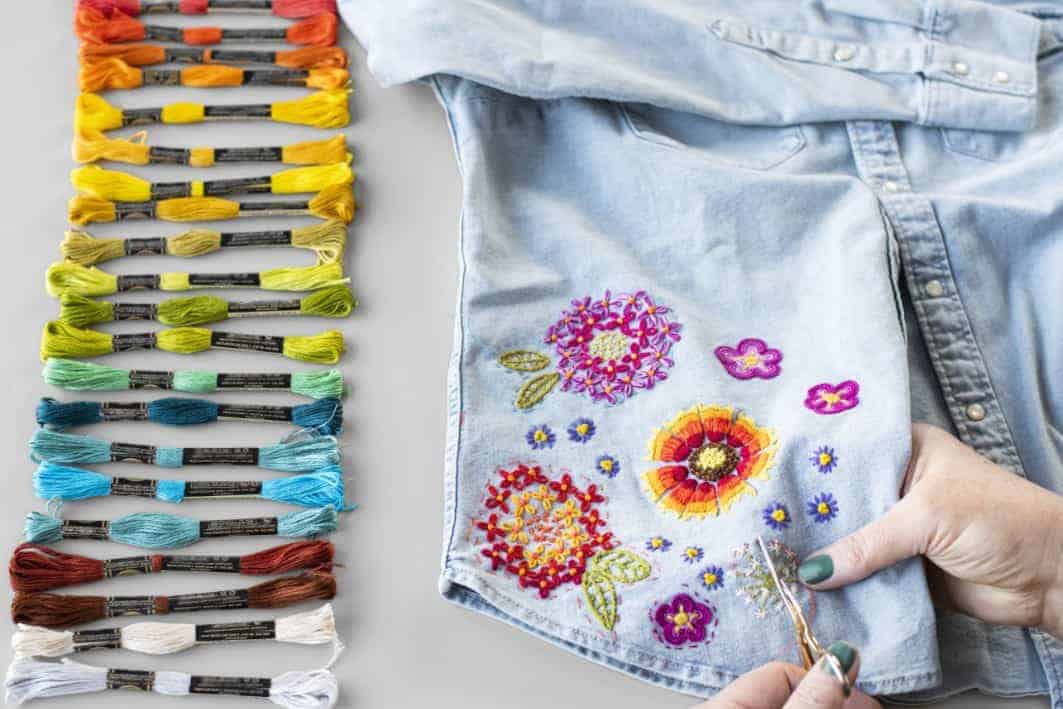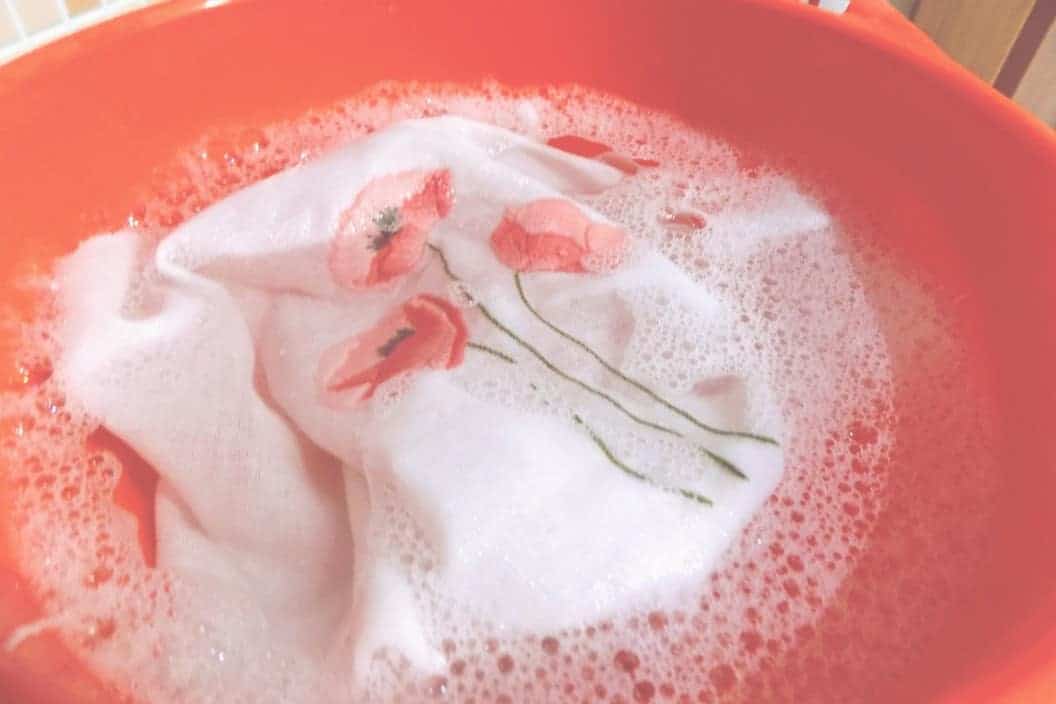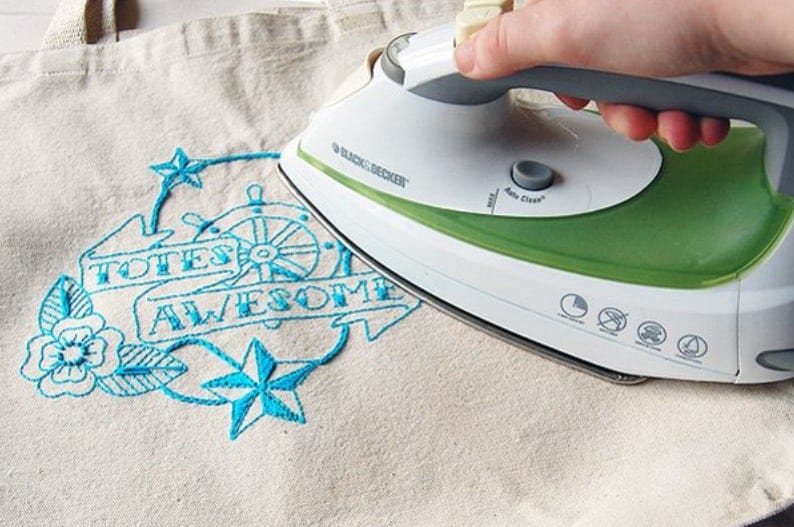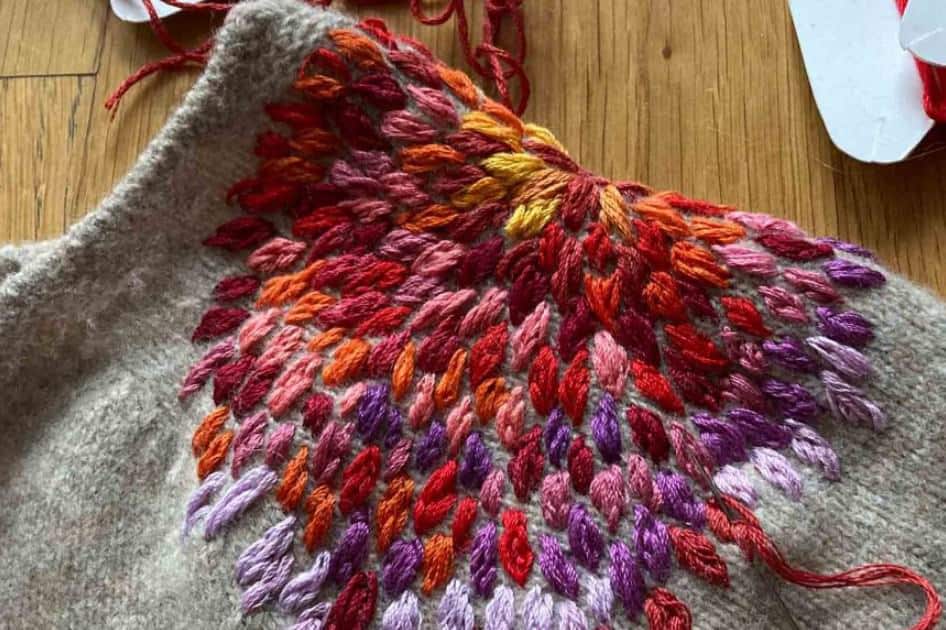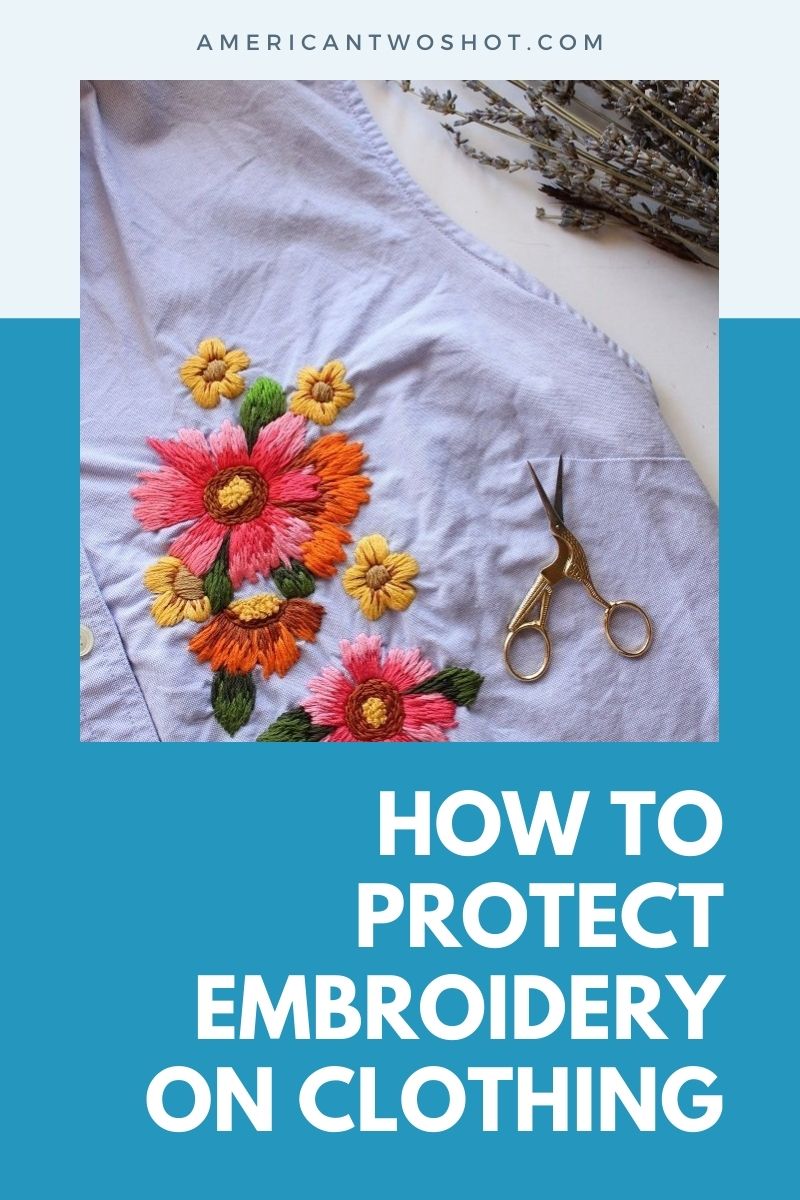Embroidery is wearable art that can make regular clothes into extraordinary ones. You can make your garments unique by embroidering images of flowers, animals, fruits, and other colorful patterns. However, these clothes are very delicate, so they need to be treated gently. We’ll be teaching you how to wash and care for embroidered clothes in this article.
A Background on Embroidery
What is embroidery?
Embroidery is an art form that involves stitching decorative patterns on fabric using thread or floss. It provides texture and eye-catching imagery that makes plain clothes unique. Some embroidered pieces become family heirlooms that can be passed on from one generation to another.
How is embroidery done?
You can embroider by hand or use a sewing machine to create intricate designs. Hand embroidery utilizes thread and needles to make delicate stitches.
On the other hand, specialized sewing machines can create 1200 zigzag stitches per minute using threads of various colors. For more complex designs, you may use embroidery software.
You can also add sequins, beads, and precious stones to the embroidered design to make it extra special.
Here is a video showing the common embroidery stitches:
How can you protect embroidered clothes before washing them?
If you are planning on creating embroidered clothes, you need to consider the following tips to ensure that your clothes will be safe during washing:
- Use embroidery thread or floss with good quality – Ensure that you use only colorfast thread. This high-quality thread will not fade during washing and last longer than cheaper ones that get fuzzy over time.
- Knot all embroidery stitches – The stitches on your garment are prone to friction and movement during washing, so knotting is a great idea. When stitches aren’t secured well, there is a chance that they might unravel or fall out.
- Apply embroider stabilizer on the back of your garment – There are iron-on embroidery stabilizers that you can apply to your clothes to ensure that stitches won’t come loose. This product lessens the friction, especially during washing and ironing.
What are the kinds of embroidered clothes?
- Sweaters – Due to the growing sports luxe trend, many stylish people are donning sweaters. A cozy neutral-colored sweater with embroidered flowers on the sleeves and shoulders is a perfect top for jeans.
- Denim Skirts – Denim skirts have been in fashion for many years now and are still a must-have in any closet. An embroidered skirt is a warm-weather outfit staple that stands out from the crowd.
- Pinstripe shirts – Jazz up your pinstripe shirts with embroidered flowers, leaves, or cherries. The added details can transform this plain garment into an exciting piece.
How to Care for Your Embroidered Clothes
Embroidered fabrics are delicate, so you need to take extra precautions when washing, drying, or ironing them. Check out some hacks you can use to ensure that your embroidered clothes stay in good condition for a long time.
Check for Color Fastness
Before washing, check the thread first for colorfastness to prevent dyes from running. Threads that are not colorfast tend to fade quickly. Follow these simple steps to test your embroidery fibers.
For large embroidered designs:
- Get a clean piece of cloth and moisten it with cold water.
- Rub it gently over each thread color.
- If any color transfers to your fabric, avoid washing the garment and have it professionally cleaned instead.
For smaller embroidered designs:
- Wet a clean cotton swab.
- Brush it gently over each thread color.
- If you notice any color on your swab, bring your garment to professional cleaners for washing.
If you did not see any color transfer in your cloth or swab, it’s safe to wash your embroidered clothes. However, you still need to follow the laundry instructions of your base fabric.
Washing Embroidered Clothes by Hand
Washing by hand is the safest and most common way to clean clothes with delicate stitches.
Here are the steps in handwashing your embroidered garments.
Steps in Washing Embroidered Clothes by Hand
- Use mild detergent and cold water, if possible. Avoid using bleach, chlorine, or sodium carbonate on your clothes.
- Put your garment in a basin or sink with soap and allow it to soak for a few minutes. Stir it every 30 seconds.
- Carefully pour out the soapy water.
- Fill it again with clean, warm water and rinse the garment.
- Keep on rinsing until there are no traces of detergent on your clothes.
- On your last rinse, add a tablespoon of vinegar to revive the sheen of the thread.
3 Tips on Washing Your Embroidered Clothes by Hand
- Ensure that the basin or sink you will use has no residue from chemicals or other cleaning agents that could damage your clothes.
- It is advisable to use liquid detergent since it is easier to rinse off and leaves less residue.
- Avoid twisting or wringing the fabric. Remember that friction may damage the fabric’s delicate stitches.
This video will teach you how to wash embroidered clothes by hand:
Washing Embroidered Clothes Using a Machine
Due to the embroidered clothing’s delicate nature, using a washing machine to clean it is not recommended. There’s a chance that the stitches may unravel after a few washes. Machine-washed embroidered garments tend to fade quickly, too.
However, you can still use a washing machine when left with no choice. It would be best to exercise extra precaution to preserve the beauty and strength of your embroidered clothes.
It would be a great idea not to wash your embroidered clothes often via a washing machine to make them last longer. A few occasions can be harmless but don’t do it regularly to be safe.
Here are the steps in using a washing machine:
7 Steps in Using a Washing Machine to Clean Embroidered Clothes
- Use a soft-bristled brush to gently remove any dirt or food debris on your clothes.
- Check the label on your garment and ensure that you follow the care instructions.
- Turn your clothes inside out, ensuring the back part of the embroidery is visible.
- Place the garment inside a laundry bag before tossing them in the washing machine.
- Use a delicate washing machine setting.
- Fill your washing machine with cold water. The maximum temperature should be 30 degrees Celsius.
- Remove the clothes from the washing machine immediately after the wash cycle.
8 Tips on Using Your Washing Machine to Wash Your Embroidered Clothes
- Avoid leaving embroidered garments soaking in the washer for a long time. Also, do not leave in on a pile when wet.
- Avoid scrubbing embroidered clothes. Always think of them as delicate items.
- Do not use your spin dryer after the wash cycle. We will be discussing drying techniques later in this article.
- Check the material of your base fabric before tossing them in the washer. Most embroideries on nylon, cotton, and polyester fabrics are stronger than the others so that they can survive a machine wash.
- If your base fabric is silk or wool, avoid washing them in the washing machine altogether.
- If possible, do not wash embroidered clothes with other garments. Avoid mixing them with other garments with zippers, snaps, or studs.
- Please do not wash with other colored garments since their colors might bleed on your embroidered clothes.
- Avoid using chlorine bleach or other harsh cleaning agents.
This video shows the difference between washing by hand and via a washing machine:
Drying Embroidered Clothes
Drying is an essential part of keeping your embroidered clothes clean. Here are some ways to dry your delicate garments to make them last longer.
4 Steps in Drying Embroidered Clothes:
- After washing, squeeze out excess water. Remember, do it gently so as not to damage the stitches.
- Lay the garment in between two dry and clean towels.
- Gently stroke the upper towel and smoothen it with your hands to remove excess moisture.
- If the towels become too wet, lay the garment on another dry towel and air dry.
4 Tips in Drying Your Embroidered Clothes
- Never wring, tug, or fold your wet embroidered garments. Doing these things can cause your stitches to unravel.
- Avoid drying your embroidered fabric on a clothesline.
- Never use a spin dryer to dry your clothes.
- Avoid leaving your embroidered garment in a damp area while air drying.
Ironing or Pressing Embroidered Clothes
Ironing makes your clothes look presentable. It’s perfectly okay to iron embroidered dresses as long as you follow these simple steps:
4 Steps in Ironing Embroidered Clothes
- Turn your garment inside out. Make sure to iron it on the wrong side.
- Place a soft and thick towel on your ironing board and place the garment on top of it before ironing.
- Use the heat setting recommended on the garment’s care label.
- If you need to iron on the right side of your dress or shirt, put a pressing cloth between the embroidery and the iron. This method will prevent the melting or tearing of the stitches.
3 Tips on Ironing Your Embroidered Clothes
- Avoid applying steam or moisture to the fabric before pressing.
- Ensure that the iron is clean before using it.
- If there is no care label on the garment, use low to medium heat to be safe.
Folding and Storing
Folding and storing your clothes properly will keep them looking nice and fresh for a long time.
Check out these tips on how to fold and store your embroidered clothes:
3 Tips on Folding and Storing Embroidered Clothes
- Hang your clothes in your closet. If possible, use a dust-proof cover to protect your delicate garment.
- If you need to place your clothes in a suitcase or drawer, avoid folding along the embroidered parts.
- Ensure that the clothes are fully dry before storing them.
Conclusion
Embroidered clothes are delicate pieces of art that need utmost care. So much effort has been placed on creating beautiful stitches, so they deserve to be washed, dried and stored correctly. Please follow the tips we mentioned so you won’t have a hard time preserving the beauty of your embroidered masterpieces.

Jessica Oliver is a fashion enthusiast with more than ten years of experience in the industry. She previously managed her own clothing store in New York before becoming a mother of three. With a passion for sustainability and a desire to share clothing care and recycling tips.

